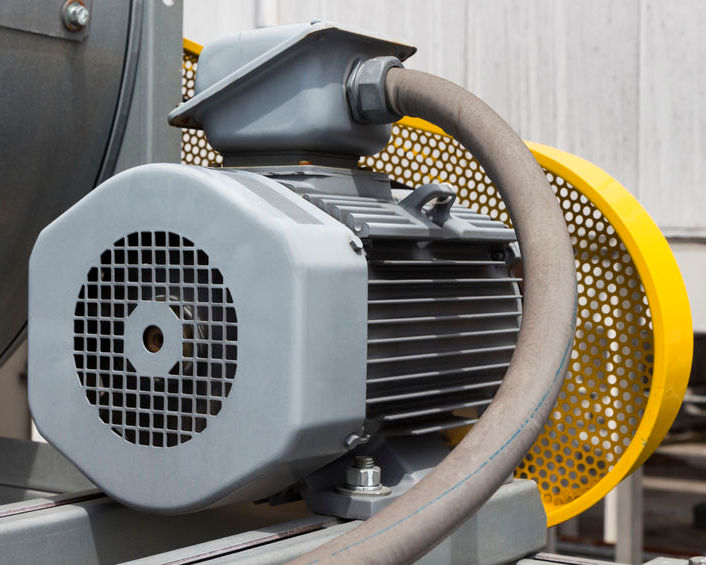Hazards of Moving Parts
Introduction
Crushed hands and arms, severed fingers, blindness—the list of possible machinery-related injuries is as long and horrifying. It seems there are as many hazards created by moving machine parts as there are types of machines. Machine guards are essential for protecting workers from needless and preventable injuries.
A good rule to remember is: When the operation of a machine or accidental contact with a machine can injure the operator or others in the vicinity, the hazards must be either controlled or eliminated.
This course describes the various hazards of mechanical motion and presents some techniques for protecting workers from these hazards. General information covered in this chapter includes -- where mechanical hazards occur, the hazards created by different kinds of motions and the requirements for effective machine guards, as well as a brief discussion of non-mechanical hazards.
Where Mechanical Hazards Occur
Dangerous moving parts in three basic areas require machine safeguarding:
The point of operation: the point where work is performed on the material, such as cutting, shaping, boring, or forming of stock.
Power transmission apparatus: all components of the mechanical system that transmit energy to the part of the machine performing the work.These components include flywheels, pulleys, belts, connecting rods, couplings, cams, spindles, chains, cranks, and gears.
Other moving parts: all parts of the machine which move while the machine is working. These can include reciprocating, rotating, and transverse moving parts, as well as feed mechanisms and auxiliary parts of the machine.
Description of Accident
A 23-year-old woman in the United Kingdom underwent four surgeries and trauma counseling after a devastating workplace accident that led to the amputation of her right hand.
She had been working on a blown line machine at a foam products facility when the equipment became blocked. A colleague isolated the machine from the main power supply, and the woman proceeded to unscrew a Perspex access window to reach inside.
The window had been installed to give operators and engineers access to the machine’s interior but had not been fitted with an interlocking guard. As a result, moving parts remained accessible even when the machine appeared to be powered down. Risk assessments had not been reviewed or updated since the window was added.
As the worker reached in to clear the blockage, residual energy in the mechanism caused it to move, pulling in her right hand.
The incident resulted in the loss of three fingers, and further surgery led to the full amputation of her hand.
She later said the injury had completely changed her life and her sense of self.
Inspection Results
An investigation by the Health and Safety Executive (HSE) found that the company had no safe system of work for clearing blockages — despite knowing that such incidents were common.
The company also failed to restrict access to tools that allowed employees to reach the machine’s dangerous moving parts.
In court, the company pleaded guilty to breaching Section 2(1) of the Health and Safety at Work etc. Act 1974. They were fined £180,000 and ordered to pay £4,337 in costs.
Knowledge Check Choose the best answer for the question.
1-1. When the operation of a machine or accidental contact with a machine can injure the operator or others in the vicinity, _____.
You forgot to answer the question!

